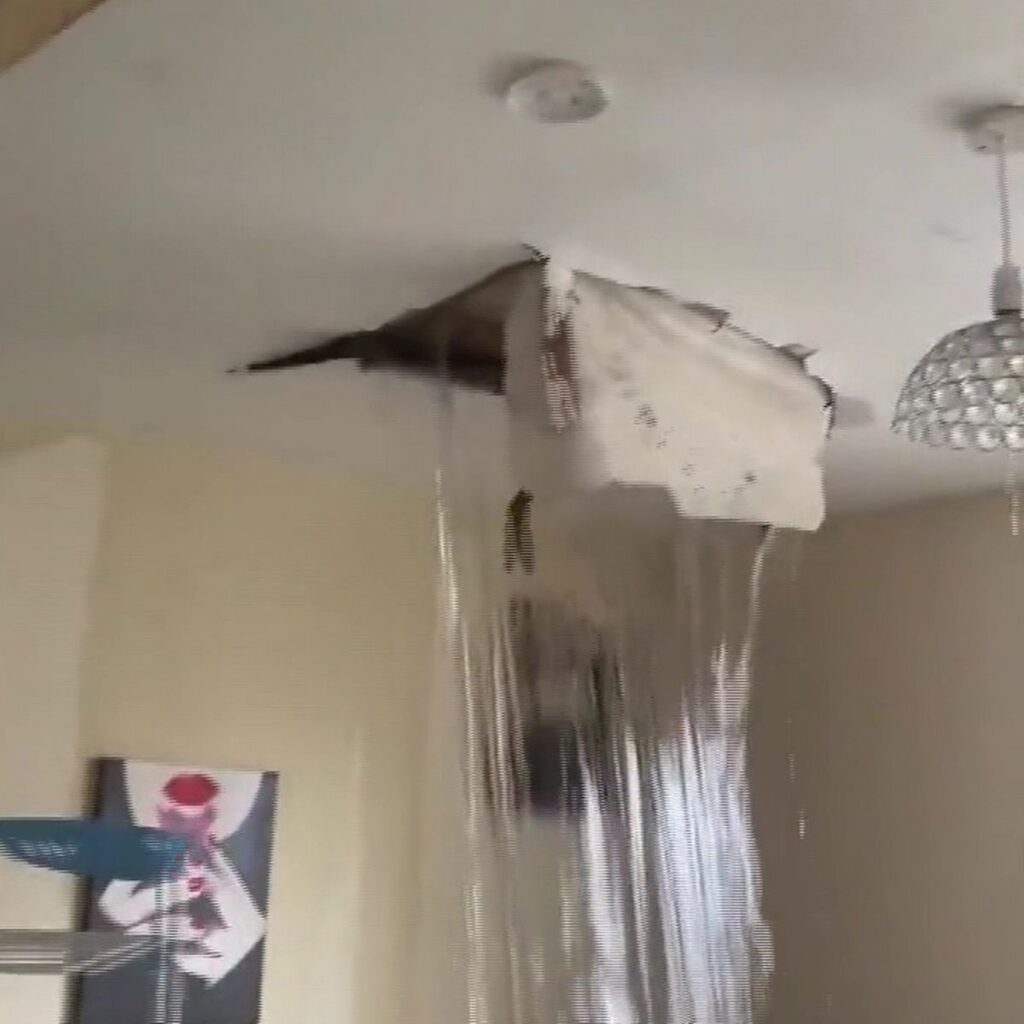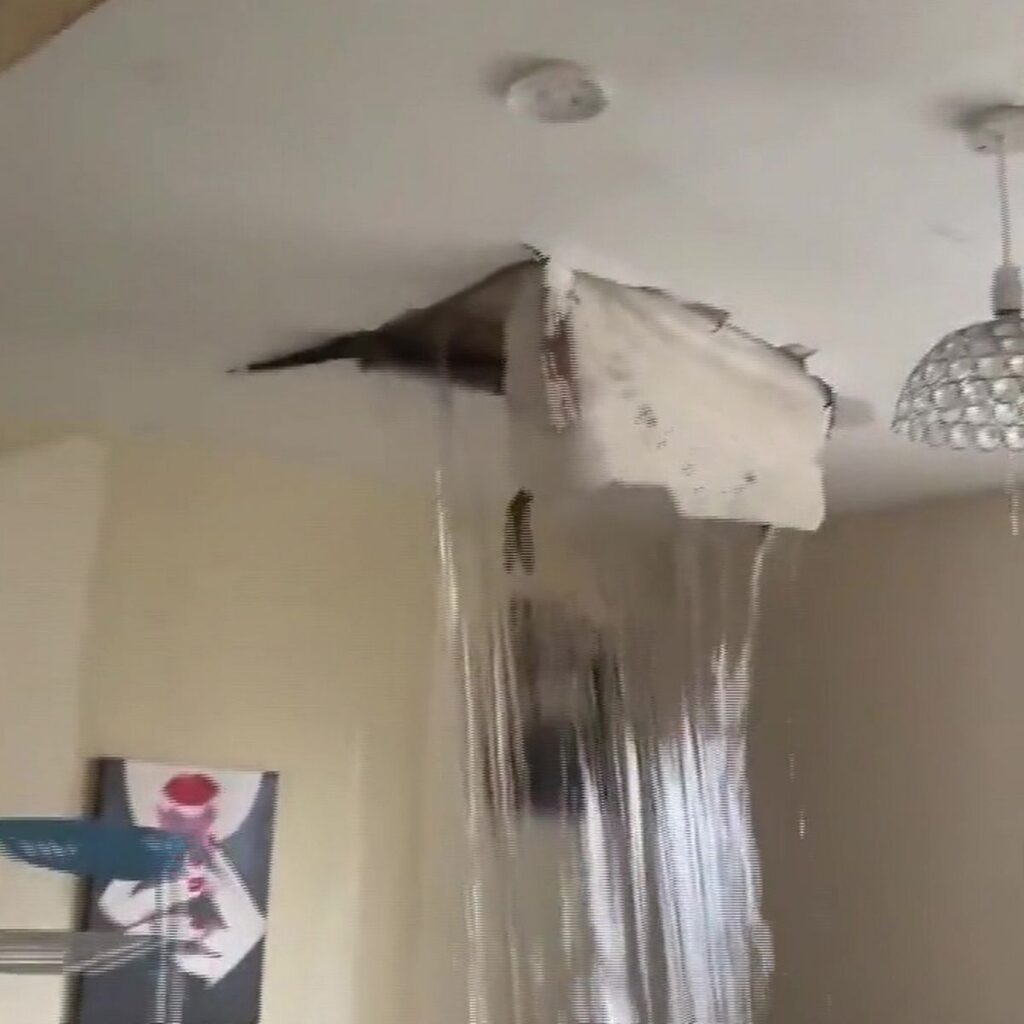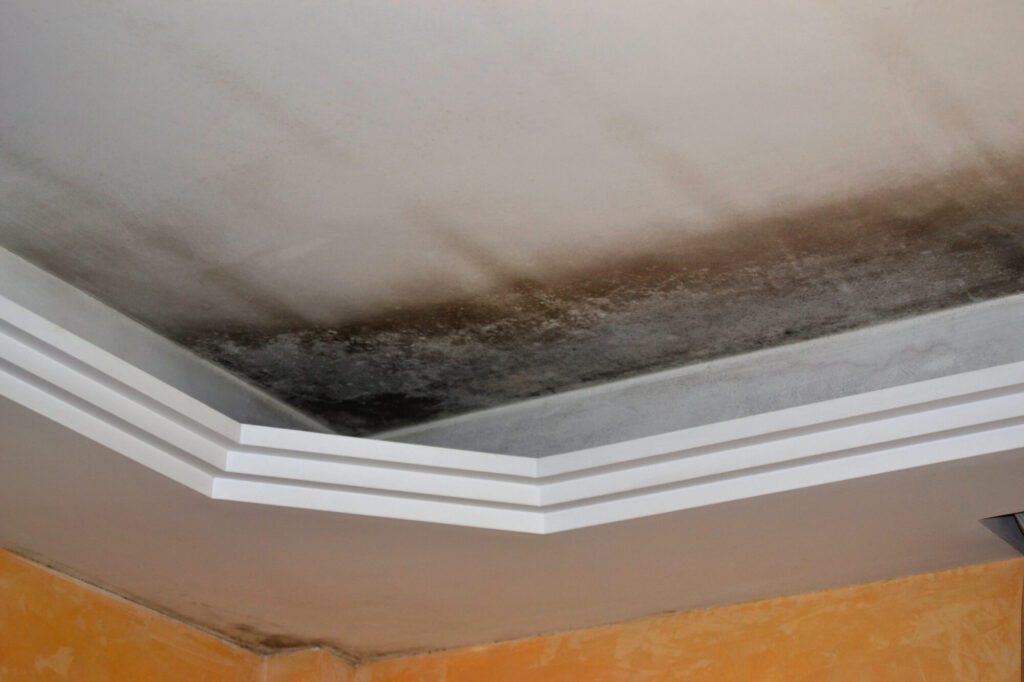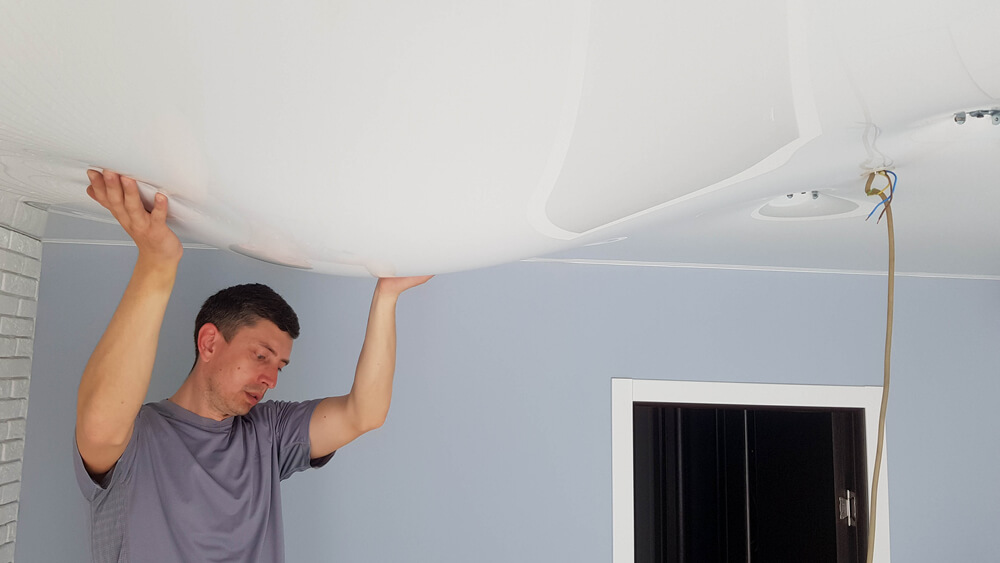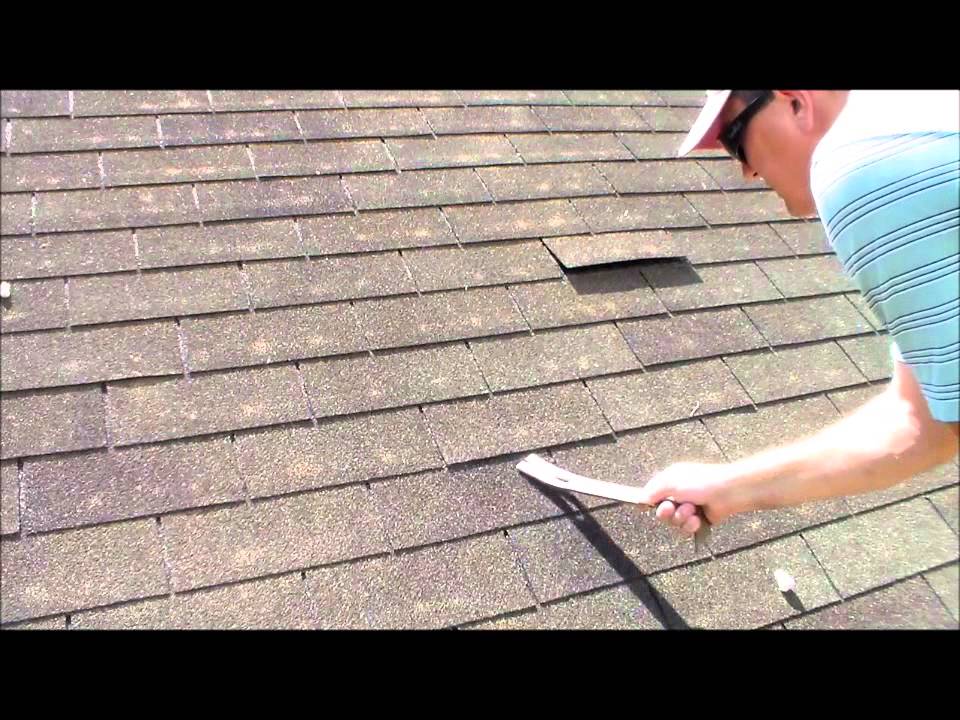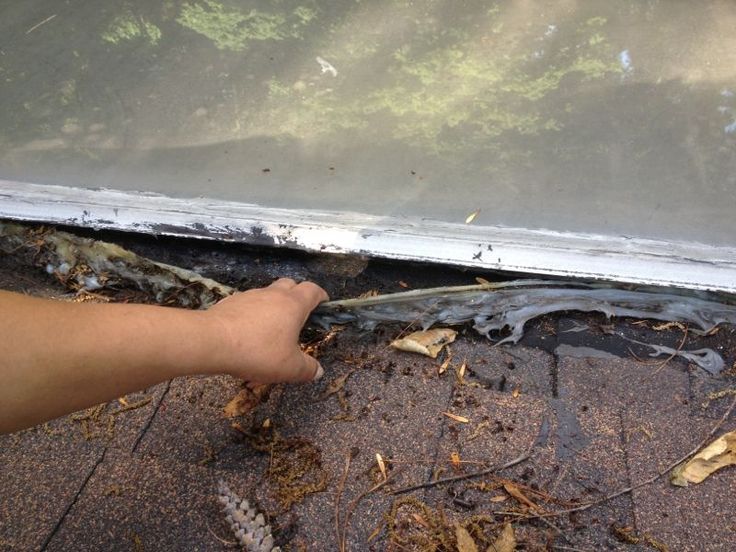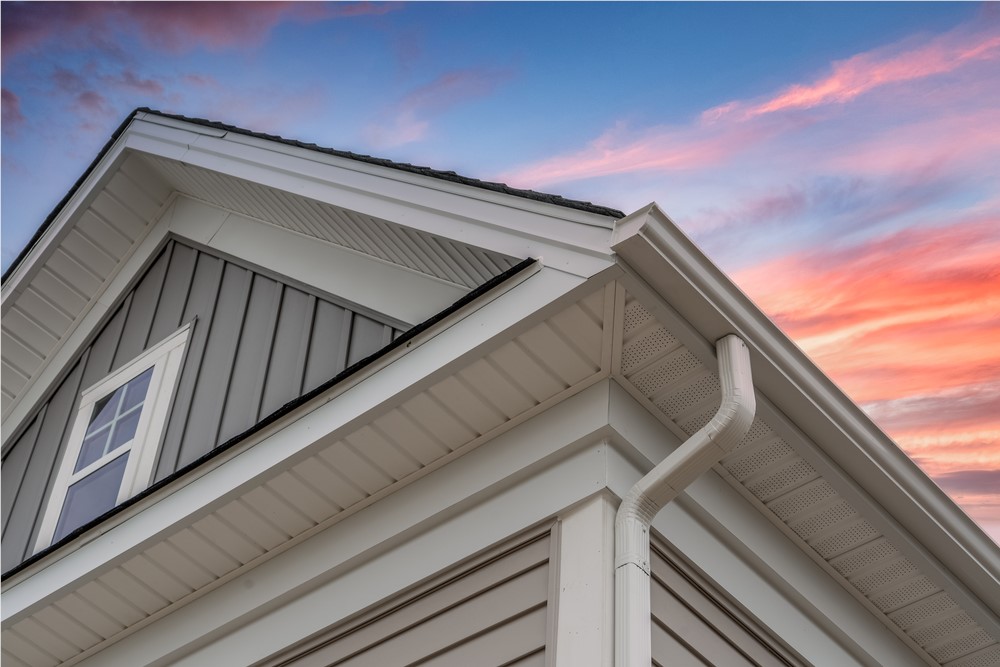Have you ever wondered if a roof can actually collapse from a small leak? Well, the answer might surprise you. While a leak may not seem like a major issue, it can eventually lead to serious structural damage if left untreated. This article explores the potential risks of a leaking roof and the important steps you should take to prevent any potential collapse. So, let’s dive into the world of roof leaks and unveil the hidden dangers they can pose to your home.


Signs of a roof leak
Water stains on ceiling
One of the most common signs of a roof leak is water stains on the ceiling. These stains may appear as discolored patches or circular marks on the surface. They are often caused by water seeping through the roof and pooling on the ceiling. If you notice any water stains, it is important to address the issue promptly to prevent further damage.
Dripping water
Another clear indication of a roof leak is the presence of dripping water. This could manifest as actual drops falling from the ceiling or as a consistent trickle of water in certain areas. If you observe any dripping water inside your home, especially during or after rainfall, it is a strong indication that there is a leak in your roof that needs immediate attention.
Mold or mildew growth
Roof leaks can create the perfect conditions for mold and mildew growth in your home. If you notice any green or black spots on your walls, ceilings, or near the edges of your roof, it could be a sign of a leak. Mold and mildew thrive in damp environments, and when water infiltrates your home through a leaky roof, it creates the ideal habitat for these fungi to flourish.
Peeling paint or wallpaper
Peeling paint or wallpaper can also be an indicator of a roof leak. When water seeps into the layers of paint or adhesive, it can cause them to detach from the surface. If you notice any bubbling, cracking, or peeling of paint or wallpaper, especially near the ceiling, it is important to investigate the source of the moisture and address the leak accordingly.
Causes of roof leaks
Age and deterioration
One of the most common causes of roof leaks is the natural aging and deterioration of roofing materials. Over time, exposure to the elements, such as sun, rain, wind, and temperature fluctuations, can weaken the roof’s integrity, leading to cracks, gaps, or deterioration in the roofing system. As the roof ages, it becomes more vulnerable to leaks, and regular inspections and maintenance become crucial to prevent further damage.
Missing or damaged shingles
Missing or damaged shingles can also result in roof leaks. Shingles serve as the protective layer of the roof, shielding it from water and other environmental factors. When shingles are missing, cracked, or broken, they can expose the underlying layers to water infiltration. It is important to inspect your roof regularly for any signs of damaged shingles and replace them promptly to prevent leaks.
Blocked gutters
Clogged or blocked gutters can contribute to roof leaks. Gutters play a vital role in directing rainwater away from the roof and foundation of your home. When debris, such as leaves, twigs, or dirt, accumulate in the gutters, water can overflow and seep into the roof. Regularly cleaning your gutters and ensuring they are free from obstructions can help prevent water from backing up and causing leaks.
Poor installation or maintenance
Roofing systems that have been poorly installed or lack proper maintenance are more prone to leaks. If the roof was not installed correctly, it may have weak spots or gaps that can allow water to penetrate. Additionally, neglecting regular maintenance, such as inspections and repairs, can lead to the deterioration of the roof and the development of leaks. Proper installation and regular maintenance are essential to prevent roof leaks.
Flashing issues
Flashing refers to the metal or waterproof material used to seal the gaps and joints on the roof, such as around chimneys, vents, or skylights. If the flashing is damaged, improperly installed, or deteriorated, it can allow water to enter through these vulnerable areas. Regularly inspecting the flashing and addressing any issues promptly can help prevent leaks caused by flashing problems.


Effects of roof leaks
Damage to structural components
Roof leaks can cause significant damage to the structural components of your home. When water seeps into the roof and infiltrates the walls, ceilings, or beams, it can weaken their integrity over time. This can lead to sagging or dipping roofs, cracks in walls, or even structural collapse if left unaddressed. Repairing roof leaks promptly is crucial to preserve the structural stability of your home.
Health hazards from mold and mildew
One of the most concerning effects of roof leaks is the potential for mold and mildew growth. Exposure to mold and mildew can pose serious health risks, particularly for individuals with respiratory conditions or compromised immune systems. Inhaling mold spores or coming into contact with them can lead to allergies, respiratory issues, or other health problems. Properly addressing roof leaks and eliminating moisture can help mitigate the risk of mold and mildew growth.
Electrical damage
Water and electricity do not mix well, and roof leaks can put your electrical system at risk. If water infiltrates your home through a leaky roof and comes into contact with electrical wiring or appliances, it can lead to short circuits, power outages, or even electrical fires. It is crucial to address roof leaks promptly to prevent any potential electrical hazards and ensure the safety of your home.
Decreased energy efficiency
Roof leaks can also impact the energy efficiency of your home. When water infiltrates the insulation and other building materials in your roof, it can decrease their effectiveness in regulating temperature. This can result in higher energy consumption as your heating or cooling systems work harder to maintain a comfortable indoor environment. Repairing roof leaks and ensuring proper insulation can help improve energy efficiency and save on utility costs.
Potential for roof collapse
Impact on structural integrity
A severe roof leak, left unaddressed for an extended period, can have a detrimental impact on the structural integrity of your roof. As water continues to infiltrate the roof’s layers, it can weaken the underlying support and compromise the overall stability. This can increase the risk of a roof collapse, especially during heavy rainfall or snowfall.
Weakening of support beams
The prolonged exposure to water from a leaky roof can also weaken the support beams in your home. Support beams play a crucial role in distributing the weight of the roof and ensuring its stability. When water infiltrates the beams, it can cause them to rot, decay, or lose their structural strength. This compromises the overall support system of your roof, thereby increasing the potential for a collapse.
Saturation of building materials
Roof leaks can saturate the building materials in your home, including the wood, insulation, and drywall. Continuous exposure to water can cause these materials to become waterlogged, lose their structural integrity, or develop mold and mildew. When these materials are compromised, they are less able to provide support and stability, which can ultimately lead to a roof collapse.
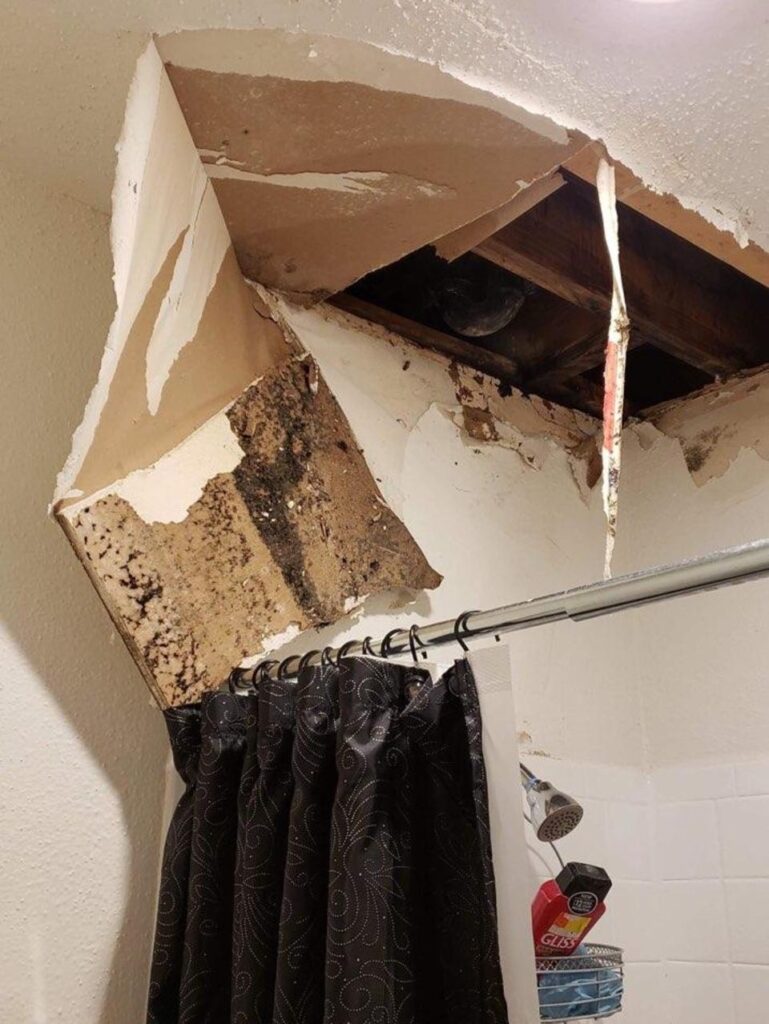

Warning signs of roof collapse
Sagging or dipping roof
One of the most apparent warning signs of an impending roof collapse is a visibly sagging or dipping roof. This can manifest as a noticeable drooping or bowing in certain sections of the roof. If you observe any irregularities in your roof’s shape, it is crucial not to ignore them and seek professional assistance immediately.
Cracks in interior walls
Cracks appearing in interior walls can be an indication of a compromised roof structure. The pressure exerted by a weakening roof can cause the walls to shift or crack. If you notice any new or expanding cracks in your walls, particularly near the ceiling, it is crucial to investigate the source and potential impact on your roof’s stability.
Popping or creaking sounds
Unusual popping or creaking sounds coming from your roof can be an alarming warning sign of a potential collapse. These sounds can indicate that the support structure is being stressed or compromised. If you hear any unexpected noises emanating from your roof, it is imperative to have it inspected by a professional as soon as possible.
Doors and windows becoming difficult to open or close
Doors and windows becoming difficult to open or close can be an indication of a shift or movement in your home’s structure caused by a roof collapse. As the roof’s integrity weakens, it can lead to uneven settling throughout the building, affecting the alignment of doors and windows. If you notice any significant changes in how your doors and windows function, it is important to have your roof inspected for potential collapse risks.
Preventing roof collapse from a leak
Regular roof inspections and maintenance
Regular roof inspections and maintenance are crucial for preventing roof collapse due to leaks. Inspections can help identify any potential issues before they escalate and ensure that your roof is in good condition. Additionally, proactive maintenance, including cleaning gutters, replacing damaged shingles, and addressing any signs of deterioration, can help prevent leaks and maintain the structural integrity of your roof.
Prompt repair of roof leaks
Addressing roof leaks promptly is vital to prevent further damage and reduce the risk of a collapse. As soon as you notice any signs of a leak, such as water stains or dripping water, take immediate action to identify the source and apply temporary fixes if necessary. However, it is important to consult a professional roofer to assess and repair the damage properly.
Proper insulation and ventilation
Proper insulation and ventilation play a significant role in preventing roof leaks and minimizing the potential for a collapse. Insulation helps regulate temperature and moisture, reducing the risk of condensation and water damage. Ventilation systems ensure proper air circulation, preventing excess moisture buildup and mold growth. Ensure that your roof is adequately insulated and ventilated to maintain its integrity.
Keeping gutters clean and free from debris
Regularly cleaning and maintaining your gutters is essential for preventing roof leaks and potential collapse. Clogged or blocked gutters can lead to water overflow and infiltration into the roof’s layers. Take the time to remove debris, such as leaves, twigs, or dirt, from your gutters to ensure that they function properly. Consider installing gutter guards to minimize the risk of blockages and improve water drainage.


Addressing a roof leak
Identifying the source of the leak
Identifying the source of a roof leak is crucial to effectively address the issue. Start by inspecting the interior of your home for any signs of water stains, dripping water, or mold growth. Once you identify the general area of the leak, inspect the exterior of your roof for any visible damage or missing shingles. If you are unable to pinpoint the exact source, it is advisable to seek professional assistance to avoid further damage or misdiagnosis.
Temporary fixes to stop the leak
In some cases, applying temporary fixes can help stop the leak until a professional can address the underlying issue. Using a tarp or plastic sheeting, you can cover the affected area to prevent water from seeping into your home. It is essential to remember that temporary fixes are not permanent solutions and should be accompanied by professional repairs as soon as possible.
Calling a professional roofer
While temporary fixes can provide immediate relief, calling a professional roofer is essential to address the root cause of the leak and prevent further damage or potential collapse. Experienced roofers have the knowledge, skills, and equipment to perform accurate assessments and make the necessary repairs to ensure the long-term integrity of your roof.
Assessing and repairing damage
Once a professional roofer assesses the leak, they will determine the extent of the damage and recommend appropriate repairs. This may include replacing missing or damaged shingles, repairing flashing, or addressing any structural issues caused by the leak. It is crucial to address any associated damage promptly to prevent further complications and maintain the overall safety and functionality of your home.
Insurance coverage for roof collapse
Homeowner’s insurance policies
Roof collapses caused by leaks may be covered under homeowner’s insurance policies. However, coverage may vary depending on the specific terms and conditions of your policy. It is important to review your insurance coverage carefully and consult with your insurance provider to understand the extent of your protection in the event of a roof collapse.
Filing a claim
If your roof collapses due to a leak, it is important to file an insurance claim as soon as possible. Contact your insurance provider to initiate the claims process and provide any necessary documentation or evidence of the damage. It is advisable to document the extent of the damage with photographs and keep records of any repair estimates and invoices.
Working with insurance adjusters
During the claims process, you may be assigned an insurance adjuster who will assess the damage and determine the coverage for your roof collapse. It is crucial to cooperate with the adjuster, provide them with accurate information, and ensure that all necessary repairs are thoroughly documented. Maintaining open communication with your adjuster can help expedite the claims process and ensure a fair resolution.
Documenting the damage
Documenting the damage caused by the roof collapse is essential for insurance purposes. Take photographs and videos of the collapsed roof, interior damage, and any affected belongings. Keep records of repair estimates, invoices, and any other relevant documentation. This comprehensive documentation will support your insurance claim and help ensure that you receive the coverage you are entitled to.
Emergency measures for roof collapse
Evacuating the building
In the event of a roof collapse or imminent collapse, it is crucial to prioritize your safety and evacuate the building immediately. Alert all occupants and ensure that everyone exits the premises as quickly and safely as possible. Do not attempt to retrieve belongings or remain in the building until it has been deemed safe by professionals.
Contacting emergency services
Contacting emergency services, such as the fire department or local authorities, is essential for immediate assistance and professional guidance during a roof collapse. Inform them of the situation, provide your location, and follow their instructions regarding evacuation and safety measures. Emergency services can also help secure the area and prevent further damage or injuries.
Temporary support and reinforcement
In certain cases, it may be necessary to provide temporary support and reinforcement to prevent further collapse or damage. However, this should only be done by professionals who are experienced in structural engineering and emergency repairs. Attempting to reinforce a collapsed roof without the necessary expertise can be dangerous and potentially worsen the situation.
Securing belongings
If it is safe to do so and there is sufficient time, you may be able to secure or protect certain belongings before evacuating the building. This may include moving valuables to higher ground, covering them with plastic sheeting, or relocating them to unaffected areas. However, your safety should always be the top priority, and you should never jeopardize it to retrieve or secure belongings.
Conclusion
Roof leaks can have serious implications for the integrity and safety of your home. From water stains on the ceiling to the potential for a roof collapse, addressing roof leaks promptly and effectively is essential to mitigate damage and protect both the structure of your home and its occupants. Regular roof inspections, prompt repairs, and proper maintenance are key in preventing roof leaks and potential collapse. In the event of a roof collapse, prioritizing safety, contacting emergency services, and following professional advice is crucial. Remember to document the damage and work closely with your insurance provider to file a claim for coverage. By staying vigilant and proactive, you can ensure the long-term integrity and stability of your roof, keeping your home safe and secure.

